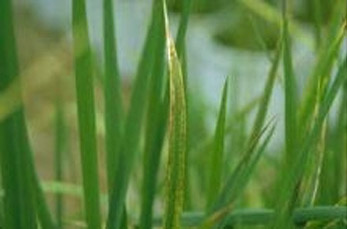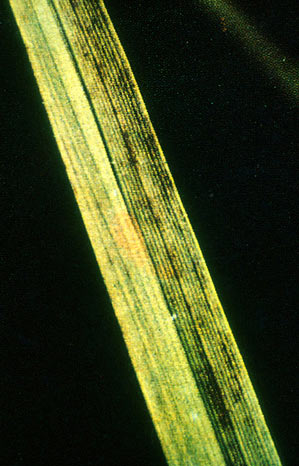Manganese (Mn) toxicity

What it does
Manganese (Mn) toxicity affects the plants' metabolic processes such as enzyme activities and organic compounds. This can lead to sterility in plants.
Why and where it occurs
Manganese toxicity is relatively rare, especially in irrigated rice systems and rarely occurs in lowland rice. It can occur in the following soils:
- acid upland soils (pH <5.5); Mn toxicity often occurs with Aluminum (Al) toxicity
- lowland soils containing large amounts of easily reducible Mn
- acid sulfate soils
- areas affected by Mn mining (e.g., Japan)
 How to identify
How to identify
Check the plants for the following symptoms:
- yellowish brown spots between leaf veins, extending to the whole interveinal area
- brown spots on veins of lower leaf blades and leaf sheaths
- leaf tips dry out eight weeks after planting
- chlorosis of younger (upper) leaves
- stunted plants
- reduced tillering
Sterility results in reduced grain yield.
The chlorosis of younger or upper leaves is similar to those of Iron (Fe) chlorosis. To confirm cause of problem, bring soil and plant sample to the laboratory for testing.
Why is it important
Manganese toxicity damage is important throughout the growth cycle; however, this is not very common in rice.
How to manage
Manganese toxicity is not very common in rice.
Where possible, the general management options for Mn toxicity are:
- In a temperate climate, coat seeds with oxidants (e.g., Calcium peroxide) to improve germination and seedling emergence by increasing the supply of Oxygen (O2).
- Manage water efficiently. Mn absorption may be accelerated under conditions of surface drainage.
- Balance the use of fertilizers (NPK or NPK + lime) to avoid nutrient stress as a source of Mn toxicity. Apply sufficient Potassium (K) fertilizer. Apply lime on acid soils to reduce the concentration of active Mn. Do not apply excessive amounts of organic matter (manure, straw) on soils containing large concentrations of Mn and organic matter, and on poorly drained soils.
- Recycle straws or ash to replenish Silicon (Si) and K removed from the field







